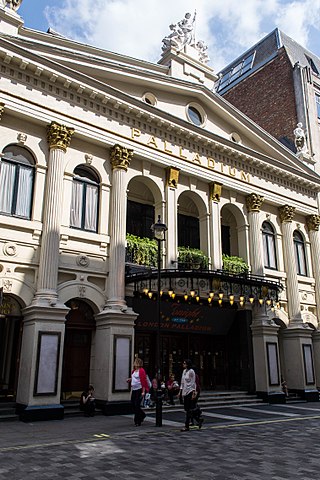
The London Palladium is a Grade II* West End theatre located on Argyll Street, London, in Soho. The auditorium holds 2,286 people. Hundreds of stars have played there, many with televised performances. Between 1955 and 1969 Sunday Night at the London Palladium was staged at the venue, produced for the ITV network. The show included a performance by the Beatles on 13 October 1963. One national paper's headlines in the following days coined the term "Beatlemania" to describe the increasingly hysterical interest in the band.

The Royal Opera House (ROH) is a historic opera house and major performing arts venue in Covent Garden, central London. The large building is often referred to as simply Covent Garden, after a previous use of the site. It is the home of The Royal Opera, The Royal Ballet, and the Orchestra of the Royal Opera House. The first theatre on the site, the Theatre Royal (1732), served primarily as a playhouse for the first hundred years of its history. In 1734, the first ballet was presented. A year later, the first season of operas, by George Frideric Handel, began. Many of his operas and oratorios were specifically written for Covent Garden and had their premieres there.

The Theatre Royal is a historic theatre, a Grade I listed building situated on Grey Street in Newcastle upon Tyne.
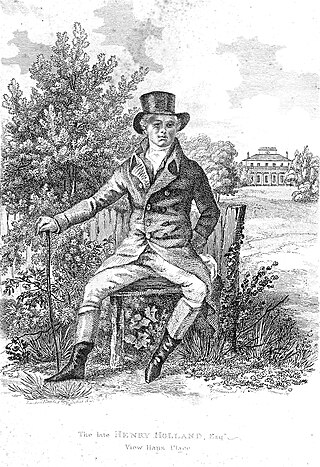
Henry Holland was an architect to the English nobility.

The Citizens Theatre, in what was the Royal Princess's Theatre, is the creation of James Bridie and is based in Glasgow, Scotland as a principal producing theatre. The theatre includes a 500-seat Main Auditorium, and has also included various studio theatres over time.
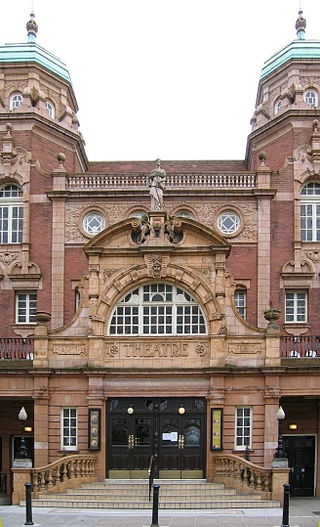
The present Richmond Theatre, in the London Borough of Richmond upon Thames, is a British Victorian theatre located on Little Green, adjacent to Richmond Green. It opened on 18 September 1899 with a performance of As You Like It. One of the finest surviving examples of the work of theatre architect Frank Matcham, the building, in red brick with buff terracotta, is listed Grade II* by Historic England. John Earl, writing in 1982, described it as "[o]f outstanding importance as the most completely preserved Matcham theatre in Greater London and one of his most satisfying interiors."

The Theatre Royal is the oldest theatre in Glasgow and the longest running in Scotland. Located at 282 Hope Street, its front door was originally round the corner in Cowcaddens Street. It currently accommodates 1,541 people and is owned by Scottish Opera. The theatre opened in 1867, adopting the name Theatre Royal two years later. It is also the birthplace of Howard & Wyndham Ltd, owners and managers of theatres in Scotland and England until the 1970s, created by its chairman Baillie Michael Simons in 1895. It was Simons who as a cultural entrepreneur of his day also promoted the building of Kelvingrove Art Gallery and Museum and Glasgow's International Exhibitions of 1888 and 1901.
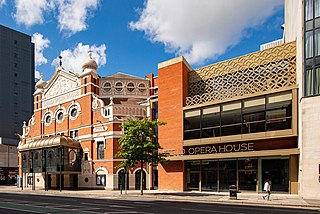
The Grand Opera House is a theatre in Belfast, Northern Ireland, designed by the most prolific theatre architect of the period, Frank Matcham. It opened on 23 December 1895. According to the Theatres Trust, the "magnificent auditorium is probably the best surviving example in the United Kingdom of the oriental style applied to theatre architecture". The auditorium was restored to its former glory, and the foyer spaces and bars were reimagined and developed as part of a £12.2 million project in 2020/2021, generously supported by the National Lottery Heritage Fund. [1]

The Grand Theatre in Warsaw, known in full as the Grand Theatre–National Opera, is a theatre and opera complex situated on the historic Theatre Square in central Warsaw, Poland. The Warsaw Grand Theatre is home to the Polish National Ballet and has a seating capacity of over 2,000.
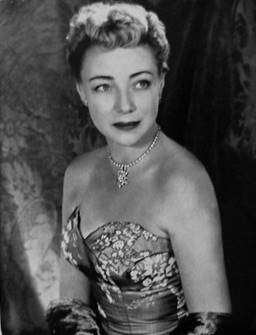
Mary Kerridge was an English actress and theatre director, who ran the Theatre Royal, Windsor and its in-house repertory company from the 1930s to the 1980s. Her daughter is the actress Elizabeth Counsell.

The Theatre Royal, Brighton is a theatre in Brighton, England presenting a range of West End and touring musicals and plays, along with performances of opera and ballet.

The Yvonne Arnaud Theatre is a theatre located in Guildford, Surrey, England. Named after the actress Yvonne Arnaud, it presents a series of locally produced and national touring productions, including opera, ballet and pantomime. The theatre has two performance venues, the main auditorium and the smaller Mill Studio.

The Theatre Royal in Nottingham, England, is a theatre venue in the heart of Nottingham City Centre and is owned by Nottingham City Council as part of a complex that also includes the city's Royal Concert Hall. The Theatre Royal attracts major touring dramas, opera, ballet, West End musicals and an annual pantomime.

The Alhambra Theatre, Glasgow opened on 19 December 1910 at the corner of Waterloo Street and Wellington Street, Glasgow under the direction of Sir Alfred Butt and was acknowledged as one of the best equipped theatres in Britain, planned to accommodate 2,800 people.

The King's Theatre is a theatre in Edinburgh, Scotland.

The Wolverhampton Grand Theatre, commonly known as The Grand, is a theatre located on Lichfield Street, Wolverhampton. The theatre was designed in 1894 by Architect Charles J. Phipps. It is a Grade II Listed Building with a seating capacity of 1200.

The Marina is a theatre and cinema in Lowestoft, Suffolk, originally opened in the Victorian era. The venue has an auditorium seating 800. It plays host to major West End productions, top comedy, orchestral concerts, touring drama and musical productions, opera, ballet, music, dance and celebrity concerts as well as operating a successful cinema operation - boasting the largest screen and cinema auditoria in the town. The Marina annually hosts the largest professional pantomime on the East Anglian Coast.

The St James Theatre is a heritage stage theatre and cinema located near Queen Street in Auckland, New Zealand. Built in 1928, it was a replacement for the older Fuller's Opera House and was originally designed for vaudeville acts. Its architect Henry Eli White also designed many other famous theatres in Australia and New Zealand including the St James Theatre in Wellington and the State Theatre in Sydney.

The New Theatre Royal is a Victorian Grade II* listed theatre in the heart of Portsmouth, England, with a capacity of 667. The theatre building was constructed in 1854 as Landport Hall. It was converted to a theatre two years later. It was rebuilt in 1884 by Charles J. Phipps and again in 1900 by Frank Matcham.
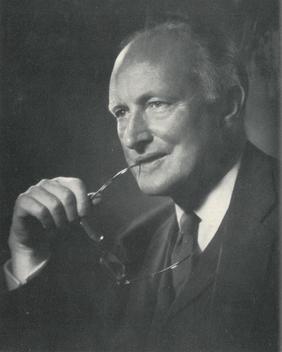
John William Counsell was an English actor, director and theatre manager, who ran the Theatre Royal, Windsor and its in-house repertory company from the 1930s to the 1980s. His daughter is the actress Elizabeth Counsell, and he was uncle to the actress and painter Jean Miller. Born in Beckenham, to Claud Counsell and Evelyn Fleming, the bulk of Counsell's career was spent in Windsor repertory theatre and the West End stage.




















